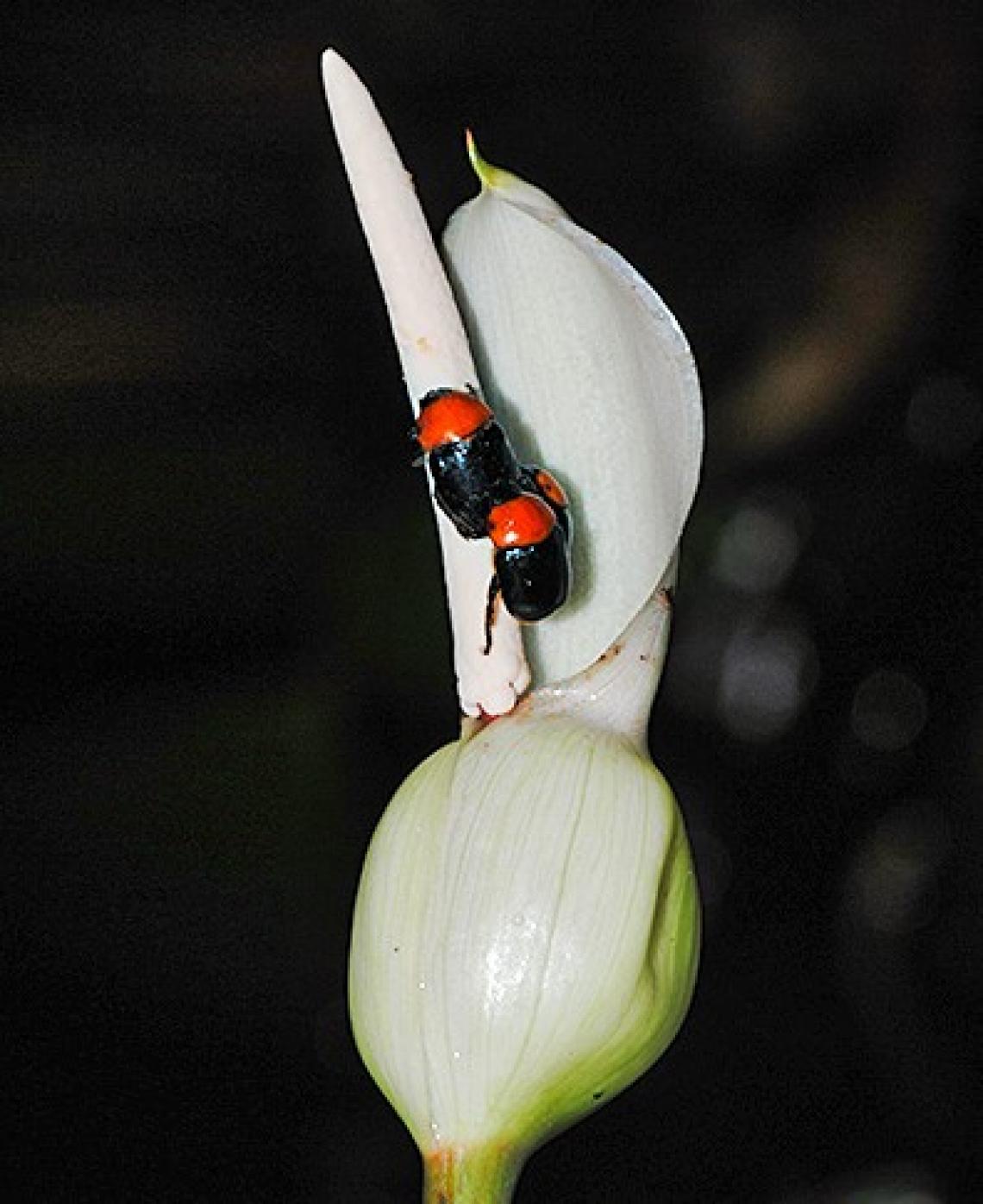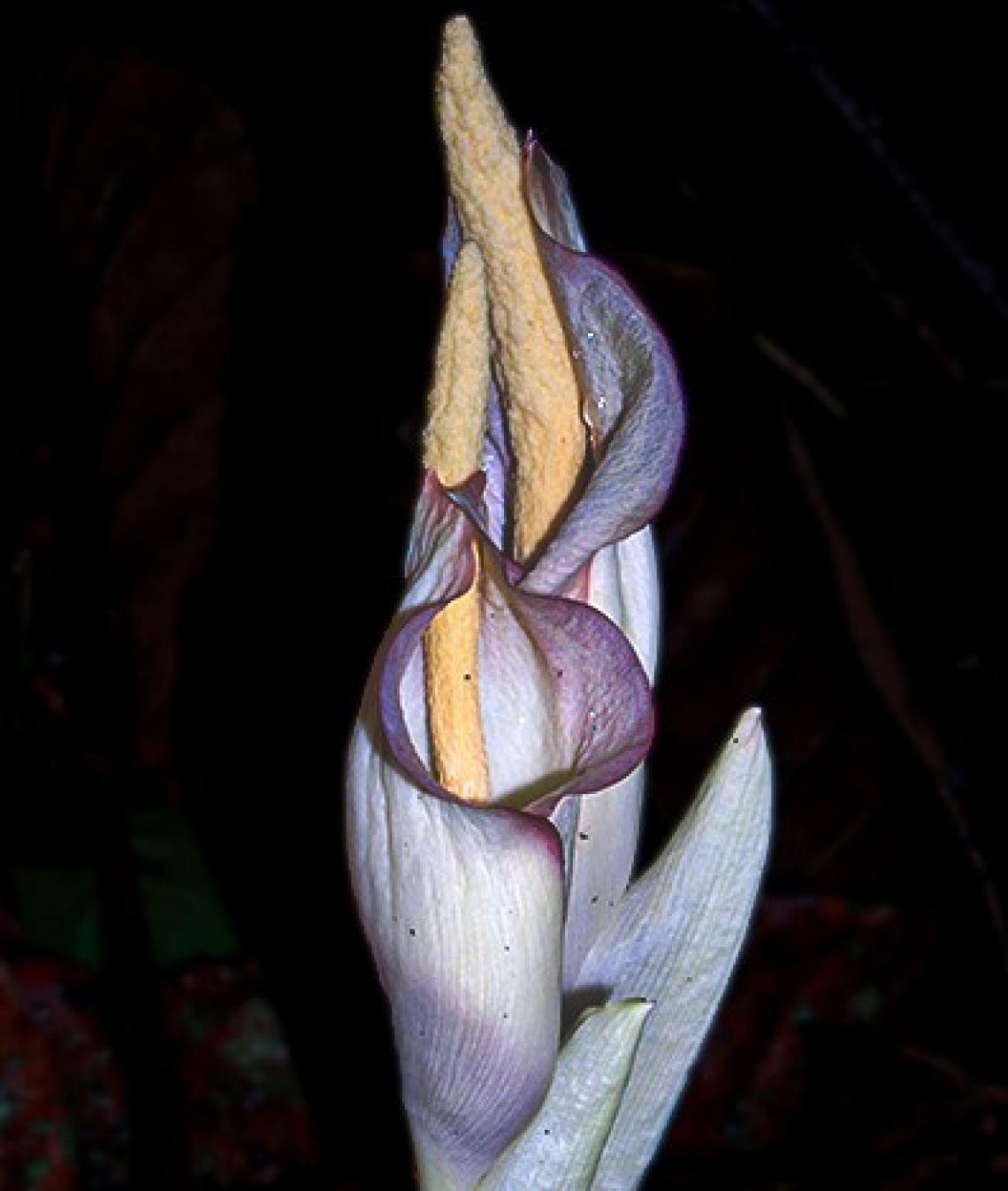This story is featured in the Asia Research News 2023 magazine. If you would like to receive regular research news, join our growing community.
Get the news in your inbox
A study of the Amorphophallus plants on Borneo shines new light on the evolutionary relationships among different members of this plant group. Wong Sin Yeng and colleagues at the Institute of Biodiversity and Environmental Conservation at Universiti Malaysia Sarawak report their findings in the journal Taiwania.
“This work and our wider research on the complex mutualistic relationships between plants and their environment helps guide sound decisions on conservation policies to secure the long-term future of diverse native plant species and their natural habitats,” says Wong.
Wong Sin Yeng is en-route to fieldwork on the Serenau River in Kapit, Sarawak.
Amorphophallus is a plant genus comprising approximately 220 species of mainly lowland plants. They grow in tropical and subtropical zones from West Africa to the Pacific Islands and Japan. The centre of greatest diversity is focused on Indomalaya. 19 indigenous species are found on the large island of Borneo in the South China Sea.
The name Amorphophallus derives from the plants’ prominent central flowering structure, called a spadix. The most famous species, although not found on Borneo, is the huge titan arum, which produces the world’s largest unbranched flower structure.
Wong and her colleagues conducted genetic analyses to better understand the evolutionary relationships among the various Amorphophallus species of Borneo. This involved extracting and sequencing DNA from two regions of the plants’ chromosomes, and one region of the DNA in sub-cellular organelles called plastids. The team performed 123 sequence analyses, representing 46 plant individuals.
The beetles use the bloom of Amorphophallus plants as mating chamber while acting as pollinators for the species.
The results allowed the researchers to construct a phylogenetic tree of the Amorphophallus plants they had studied. Visually, this is a branching diagram depicting the evolutionary relationships among the sampled species, but the genetic details used to construct the tree contain deeper information.
The work also explored the varying structure and biology of three species of Amorphophallus flowers, and the diversity of creatures interacting with them. This adds insights about the interrelationships between the flowers and their local habitat.
Amorphophallus eburneus is a species found in a very limited area of the karst limestone forest in the southwest of Sarawak.
Over the next few years, Wong aims to investigate more of the Bornean species. She expects this may reveal that currently defined single species may actually be several different species despite their outwardly similar appearances. detailed genetic analysis is the only reliable way to probe such hidden complexities.
While the molecular genetics reveal the evolutionary secrets, the field trips into the world of the plants are equally inspiring for Wong. “Every visit to the forest, every hour spent observing plants and their insect visitors, every time the results of a lab analysis are revealed, is a moment of discovery bringing new understanding and insight into a process that has been millions of years evolving,” she says.
Further information
Assoc. Prof Wong Sin Yeng
[email protected]
Institute of Biodiversity and Environmental Conservation
Universiti Malaysia Sarawak
We welcome you to reproduce articles in Asia Research News 2023 provided appropriate credit is given to Asia Research News and the research institutions featured.







